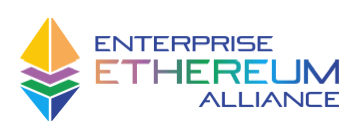Educating the Business Community About the Power of Ethereum
The Ethereum business ecosystem has seen rapid growth in recent years, which speaks directly to the technology’s value and relevance in today’s world. However, the only way to ensure that growth continues is to equip a wider range of business professionals with the education and tools necessary to begin building on Ethereum.
At the EEA, we put education front and center, and we’re working hard to arm businesses with the information, training and support they need to enter the Ethereum space and elevate their organizations with this valuable resource.
That’s why we’re so excited to share our series of educational primers, designed specifically for those new to the Ethereum ecosystem. These primers will offer introductions to many of the different concepts and facets of Ethereum (and blockchain as a whole) to help more professionals get started on the platform.
Is there a particular topic you think we should explore in an upcoming primer? We want to hear from you. Email us at [email protected] to share your ideas.
Watch our short introductory video to hear from EEA Executive Director Dan Burnett about the details and value of this program.
Introduction to Ethereum Layer 2
What is Layer 2?
“Layer 2” refers to a set of technologies or systems that run on top of the Ethereum Mainnet (Layer 1). Layer 2 – or L2 – solutions benefit from the decentralization and security properties of Layer 1 but provide greater throughput and faster transactions, at a lower cost.
Background
As the popularity of Ethereum continues to increase, issues like network congestion and transaction delays have created friction for those building on Ethereum Mainnet, the primary Ethereum network. Mainnet congestion in turn drives up gas fees, which fluctuate depending on the demand for block space. These issues bring to light the importance of platform scalability as a key stepping stone to the advancement and growth of the broader Ethereum community. Enter Layer 2.
Layer 2 solutions are built on top of the Layer 1 Mainnet and allow many Layer 2 transactions to be consolidated into one transaction on Layer 1. Why is this important? Applications built on the Mainnet can require hundreds or even thousands of transactions per second to operate, a huge amount of processing capacity that results in network congestion and high transaction cost. Layer 2 solutions deliver from 10x to 1,000x more throughput than Layer 1, a level far more conducive to handling the growing volumes of traffic on the Ethereum network.
Layer 2 solutions help address Ethereum Mainnet congestion and fees while still benefiting from much of what the Mainnet offers, including security and data integrity. In this way, Layer 2 solutions are secured by the Mainnet, but they enable blockchain applications to handle many more users, actions or data than Layer 1 could accommodate.
It’s important to note that while other competing Layer 1 networks sacrifice security and/or decentralization to achieve higher throughput, Ethereum does not. Instead, the Ethereum Mainnet retains high levels of decentralization and security, and Ethereum Layer 2 solutions run separately from the Mainnet but benefit from the security it offers, by design.
Layer 2 is a broad category, and new solutions are being developed by a range of stakeholders. The major types of Layer 2 solutions include:
Optimistic Rollups: A Layer 2 solution that combines hundreds of off- chain transfers into one transaction on the main Ethereum chain and can be challenged via a fraud proof to ensure accuracy. Optimistic rollups offer 10x-100x more throughput than the Mainnet but can have a delay in guaranteed settlement times.
Zero-Knowledge Rollups (ZK-Rollups): A Layer 2 solution that combines hundreds of off-chain transfers into one transaction on the main Ethereum chain and creates cryptographic proof of that transaction’s validity. ZK-rollups also deliver 10x-100x more throughput than the Mainnet. They can offer faster finality than optimistic rollups, but implementing smart contracts on them can be more complex. A number of variations that increase Ethereum Virtual Machine (EVM) compatibility, thus easing development, are in the works.
Validium: Similar to ZK-rollups in that they bundle numerous off- chain transfers into one, but in the case of Validium the transaction details are NOT stored on the main Ethereum chain. Numerous Validium chains can run side by side and deliver extremely high throughput – up to 10K transactions per second, per chain. However, they are less resistant to censorship and operator failure than other approaches.
State Channels: This type of Layer 2 optimizes for pairwise or small- group transactions secured by the main chain. It is spectacularly efficient for applications such as streaming micropayments where two parties interact frequently, but can be capital inefficient for others.
About The EEA
The Enterprise Ethereum Alliance (EEA) enables organizations to adopt and use Ethereum technology in their daily business operations. The EEA
empowers the Ethereum ecosystem to develop new business opportunities, drive industry adoption, and learn and collaborate.
To learn more about joining the EEA, reach out to [email protected] or visit https://entethalliance.org/become-a-member/.
